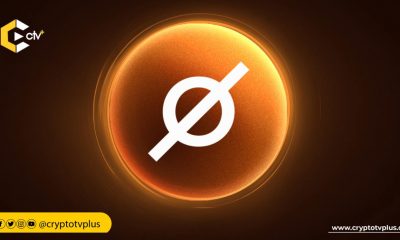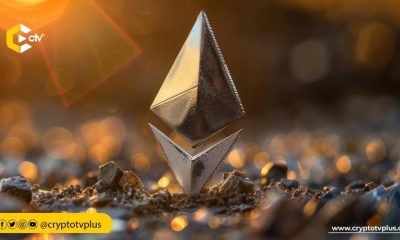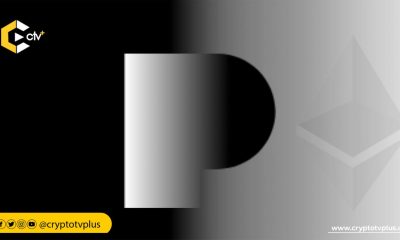News
The Crypto Bull Run: Hurting Adoption in the Short Term but Helping to Keep Innovation Momentum Alive
The cryptocurrency market is currently seeing a bull run with both the bitcoin and altcoins making impressive gains. Bitcoin is up nearly 300% since March 2020 while Ethereum traded at $450 at the time of writing.
There is no doubt; this is a feel-good moment for early adopters as well as some speculative investors.
Admittedly, any crypto bull-run serves as a good advertisement for all digital assets. Both individuals and institutions are exploring the possibility of investing in bitcoin or altcoins.
Mainstream endorsement
A few days ago, Galaxy Digital Holdings ran an advertisement in the Financial Times that asked potential investors to look into bitcoin investment.
However, the smart ones have already taken positions, and in the next few years, they will probably reap the rewards. Others like former CEO of Prudential Capital, George Ball are now giving bitcoin investing tips to those that are looking for a long term store or just a speculative asset.
To the surprise of many, Ball, a former critic of bitcoin, now recommends for investors to buy into the digital asset. Ball says bitcoin is a hedge against the inevitable debasement of currency that follows any printing of money.
Another one, Microstrategy, a Nasdaq listed investment firm, says it has invested a quarter of a billion dollars into bitcoin. Microstrategy says it took this decision after concluding the bitcoin is superior to cash.
These are just a few names on a list of mainstream organisations and prominent individuals that are dipping their hands into crypto.
There is no doubt that when more prominent or influential individuals start endorsing bitcoin, small players will be inclined to follow suit. Due to these endorsements, many crypto space observers expect to see a surge of newcomers to the cryptocurrency market.
The blemish of high network fees
However, there is one blemish to all this excitement, the growing network fees and the clogging of the popular chains. The situation is so bad that anyone aware of the advantages of cryptocurrencies like bitcoin before the bull run can be forgiven for thinking that someone lied to them.
Generally, digital assets are supposed to be cheaper and faster, yet the situation over the past few weeks has been anything but cheap. Clearly, the crypto market bull run comes with this unwanted baggage; the high network fees and very slow confirmation of transactions on the Bitcoin network.
In fact, the transactions fees have reached a point where it hardly makes sense for a migrant (or anyone for that) to abandon traditional fiat money sending channels.
On average, it currently costs anything $2 and $10 to move funds between bitcoin addresses. So in instances where bitcoin is used as a rail to move funds across borders, the high fees render this meaningless.
Take the example of a country like Zimbabwe. Bitcoin is already in short supply due to many factors, and because of that, the standard practice there is that those in possession will levy a fee on top of the going bitcoin. Yet when these premiums are added to the high network fees, it means the Bitcoin network becomes less appealing.
Take, for example, a Zimbabwean buyer of bitcoin who must pay a premium on top of the going price. The premium can range between 5% and 10%, which means the actual cost of transferring $100 will be a least $15.
This cost is more or less the same as traditional remitting channels like Western Union. So when transaction fees are as high as they are now, then it is hardly a no brainer anymore to use bitcoin to remit funds.
High fees hurting ETH’s appeal
Interestingly, this issue of high fees previously been associated mainly with the Bitcoin network. However, it appears this challenge has now caught up with ethereum (ETH), the second-largest crypto when measured by market capitalisation. The current bull run has shown that it is the Ethereum network that is garnering more in terms of fee revenues.
For instance, a report by Coinmetrics states that Ethereum transaction fees averaged $2 million per day in the first week of August 2020. ETH has not only joined bitcoin in this high network fees club but has taken the mantle.
However, for many ethereum clients, this is particularly a bitter pill. Before the bull run, the network had been a reliable one, and start-ups have long favoured this network when deploying decentralised applications (Dapps). However, the high fees are now causing some users to look for alternatives.
Until recently, the options on the Dapps front appeared limited. Scalable alternatives like Hyperledger and R3 Corda looked to be viable but still lack the decentralisation aspects that the ETH network offers.
Call to action for challengers
However, it seems this scaling and fee challenge is also having positive effects. For example, Dapps developers now have options like the Algorand blockchain, which seems to scale better.
Algorand’s proof of stake (PoS) decentralisation chain attempts to solve the so-called trilemma. On the one hand, it decentralised meaning it comes with the critical attributes that made blockchains famous in the first place. On the other, decentralisation comes at a cost, slower confirmation times which inevitably leads to high costs as is the case with the Bitcoin Network.
With transaction confirmation times of under five seconds and transaction throughput of 1000 transactions per second, Algorand blockchain gives developers a real alternative.
For example, Props Sidechain (PropsChain) recently migrated from Hyperledger to Algorand because it found the latter’s chain to support high transaction volumes but with low latency. The Props Sidechain team also said the level of transaction finality and costs was unparalleled.
Singer Akon’s crypto project is also collaborating with the Algorand whose blockchain is now reporting daily transactions volumes over 700,000.
Interestingly, the Ethereum network developers have long proposed to switching to PoS after having to contend with weaknesses of a Proof of Work consensus method.
Ideally, the high network fees must signal to entrepreneurs that this vital innovation must not stop improving. The high network fees and the slow confirmations should be a call to action to developers to produce even better platforms.
Africa is where it will happen
Africa is shaping up to be the number one cryptocurrency market, and the best way to accelerate this is by fixing flaws in first-generation blockchains. Already developers and marketers at Bitcoin Cash, XLM and Dash are working to prove that their alternatives are cheaper and faster.
Naturally, Africa based developers should at least be a part of this race to create platforms that come with lower transaction fees and faster confirmations.
























